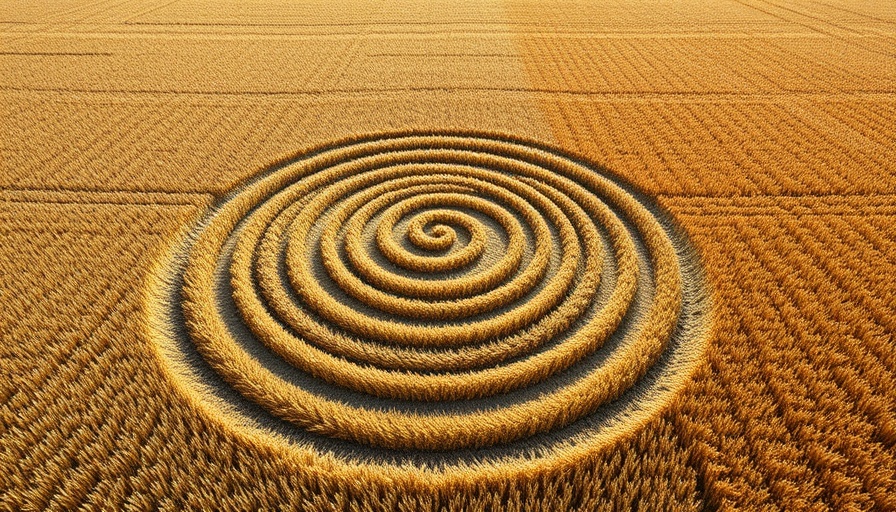
The Fascinating Truth Behind Crop Circles: It's More Grounded Than You Think
Crop circles might look mysterious from above, but their true origins are far more grounded than they seem. Picture yourself soaring over a farming state when you spot strange, perfectly shaped patterns in a field. Initially, your mind might jump to wild theories of alien spacecraft touching down, but the reality is much more earthy.
Crop circles, those sections of agricultural fields that appear flattened or arranged into geometric designs, capture the imagination of many. While many people associate them with UFO lore, history shows that these phenomena are often linked to farming practices, weather conditions, or even artistic expression.
Understanding Crop Circles: History and Mythology
The modern tale of crop circles began in the 1970s in England when large, complex patterns started to appear mysteriously in local fields. Crops exhibited bizarre geometric forms, untouched by any visible means, creating theories of UFO landings. This grabbed global media attention, especially at a time of rising interest in extraterrestrial life. The phenomenon peaked in the early 1990s when two Englishmen, Doug Bower and Dave Chorley, openly confessed to creating some of the formations using simple tools and techniques, diluting the mystery yet fueling fascination that persists.
Deconstructing the Crop Circle Phenomenon: Real Causes
While diverse theories might explain the existence of crop circles, the more probable causes are linked to common agricultural practices:
- Cutting for Silage: Farmers often cut portions of fields for silage, resulting in patches of crops appearing cut while others remain lush. The differences in moisture levels cause these snippets to dry at varying rates, making them visible from above.
- Tile Drainage Systems: Many fields are equipped with tile drains that remove excess water. When wet seasons occur, crops above these drains can flourish more than surrounding crops, creating patterns that might baffle onlookers.
- Centerpoint Irrigation: New technologies allow farmers to plant circular fields that align with irrigation patterns. From a bird’s-eye view, these shapes can appear distinctly arranged, crafted by GPS-controlled seeders.
- Natural Forces: Weather can also create all sorts of interesting crop patterns. Lightning strikes can scorch patches of a field, while strong winds might knock down crops in erratic shapes.
- Artistic Pranks: Some crop circles are deliberate creations by artists aimed at evoking curiosity or simply pulling off pranks.
Crop Circles Through the Lens of Home Design
Interestingly, the allure of crop circles can also inspire creativity in DIY home projects. Just as nature forms these intricate designs in fields, homeowners can draw inspiration from these patterns for their personal spaces. Consider emulating the geometry of crop circles in your home decor. This could involve anything from redesigning your garden lines to using circular motifs in wall art.
Practical DIY Ideas Inspired by the Geometry of Crop Circles
If you're considering a creative refresh at home, why not translate the captivating designs of crop circles into DIY home ideas? Here are a few suggestions:
- DIY Home Decor: Use circular motifs in wall art or accent pillows, inspired by the shapes you might find in a crop circle.
- DIY Home Landscaping: Arrange flower beds in circular or spiral patterns, mimicking the precision of crop fields.
- DIY Home Crafts: Create handmade gifts that incorporate circular designs or themes of nature.
Implementing these ideas not only enhances your living space, but also serves as a nod to the fascinating world of crop circles, evoking appreciation for both art and nature.
Conclusion: Why Understanding Crop Circles Benefits Everyone
By debunking myths surrounding crop circles, we can embrace a more accurate understanding that connects agriculture, artistry, and nature. These patterns serve not only as a marvel of creativity but also as an avenue for inspiration in various aspects of our lives, from home design to community engagement.
As you craft your own space, remember the delicate intertwining of nature and creativity that exists all around us. Exploring such connections can enrich your personal well-being and stimulate new ideas.
 Add Row
Add Row  Add
Add 




Write A Comment